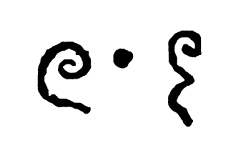First use of numbers

Bones and other artifacts have been discovered with marks cut into them that many believe are tally marks.[10] These tally marks may have been used for counting elapsed time, such as numbers of days, lunar cycles or keeping records of quantities, such as of animals.
A tallying system has no concept of place value (as in modern decimal notation), which limits its representation of large numbers. Nonetheless tallying systems are considered the first kind of abstract numeral system.
The first known system with place value was the Mesopotamian base 60 system (ca. 3400 BC) and the earliest known base 10 system dates to 3100 BC in Egypt.
Zero:
The use of 0 as a number should be distinguished from its use as a placeholder numeral in place-value systems. Many ancient texts used 0. Babylonian (Modern Iraq) and Egyptian texts used it. Egyptians used the word nfr to denote zero balance in double entry accounting entries. Indian texts used a Sanskrit word Shunyeor shunya to refer to the concept of void. In mathematics texts this word often refers to the number zero.[12]
Records show that the Ancient Greeks seemed unsure about the status of 0 as a number: they asked themselves "how can 'nothing' be something?" leading to interesting philosophical and, by the Medieval period, religious arguments about the nature and existence of 0 and the vacuum. The paradoxes of Zeno of Eleadepend in large part on the uncertain interpretation of 0. (The ancient Greeks even questioned whether 1 was a number.)
The late Olmec people of south-central Mexico began to use a true zero (a shell glyph) in the New World possibly by the 4th century BC but certainly by 40 BC, which became an integral part of Maya numerals and the Maya calendar. Mayan arithmetic used base 4 and base 5 written as base 20. Sanchez in 1961 reported a base 4, base 5 "finger" abacus.
By 130 AD, Ptolemy, influenced by Hipparchus and the Babylonians, was using a symbol for 0 (a small circle with a long overbar) within a sexagesimal numeral system otherwise using alphabetic Greek numerals. Because it was used alone, not as just a placeholder, this Hellenistic zero was the first documented use of a true zero in the Old World. In laterByzantine manuscripts of his Syntaxis Mathematica (Almagest), the Hellenistic zero had morphed into the Greek letter omicron (otherwise meaning 70).
Another true zero was used in tables alongside Roman numerals by 525 (first known use by Dionysius Exiguus), but as a word, nulla meaning nothing, not as a symbol. When division produced 0 as a remainder, nihil, also meaning nothing, was used. These medieval zeros were used by all future medieval computists (calculators of Easter). An isolated use of their initial, N, was used in a table of Roman numerals by Bede or a colleague about 725, a true zero symbol.
An early documented use of the zero by Brahmagupta (in the Brāhmasphuṭasiddhānta) dates to 628. He treated 0 as a number and discussed operations involving it, including division. By this time (the 7th century) the concept had clearly reached Cambodia as Khmer numerals, and documentation shows the idea later spreading to China and the Islamic world.

No comments:
Post a Comment